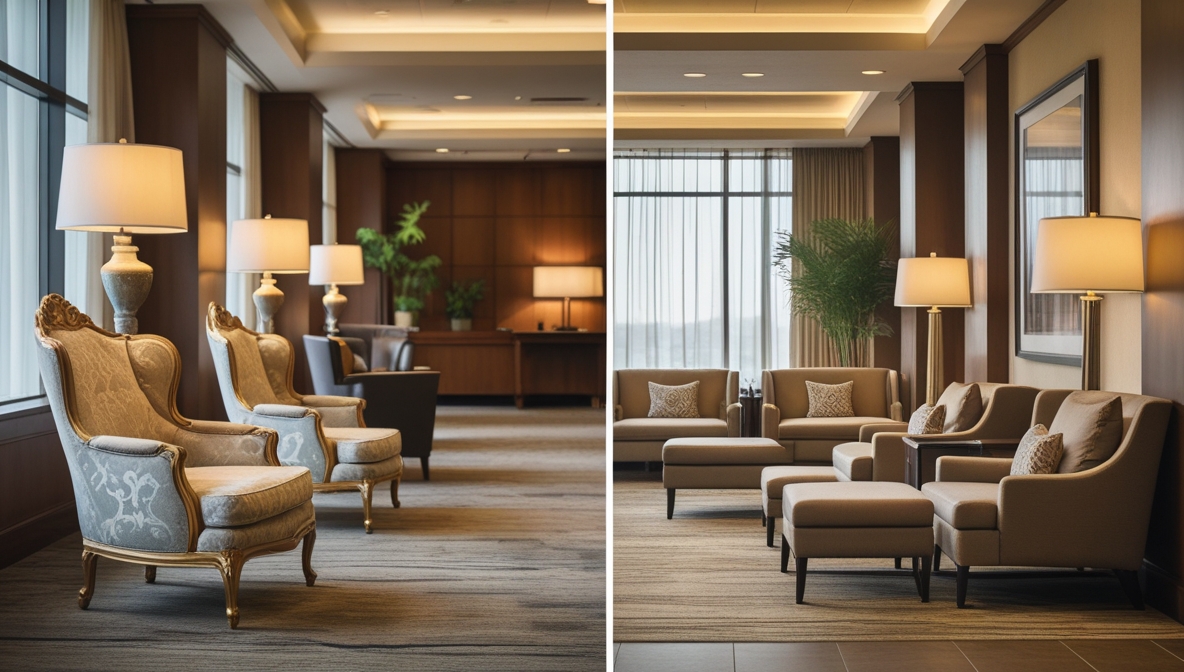Introduction to Sintered Stone
Sintered stone is a revolutionary material in the realm of building and interior design. It is crafted from natural minerals through a process called sintering, which involves exposing the raw materials to high temperatures and pressures. This procedure ensures that the resulting stone exhibits superior durability and aesthetic appeal compared to other traditional materials.
The Sintering Process
01. Raw Materials
The composition of sintered stone primarily includes natural minerals like quartz, feldspar, kaolin, and clay. These materials are selected for their inherent qualities that contribute to the overall strength, beauty, and resilience of the final product.
02. High-Pressure Compacting
The first step in the sintering process is the compacting of raw materials under extreme pressure. This phase is crucial as it helps eliminate air pockets and ensures a uniform density throughout the material. The result is a highly compacted slab that forms the base of sintered stone.
03. High-Temperature Sintering
Following the compacting process, the slab is subjected to intense heat in specialized kilns. Temperatures often reach up to 1200°C, facilitating the fusion of particles within the material. This high-temperature treatment not only strengthens the stone but also enhances its resistance to scratches, stains, and impact.
Advantages of Sintered Stone
01. Exceptional Durability
Sintered stone is renowned for its incredible durability. Thanks to its manufacturing process, it is resistant to scratches, heat, and stains. Unlike natural stone, sintered stone does not suffer from porosity issues, making it ideal for both indoor and outdoor applications.
02. Versatile Design Options
One of the most appealing aspects of sintered stone is its aesthetic versatility. It is available in a wide range of colors, patterns, and finishes, allowing designers to achieve virtually any look. Whether aiming for a sleek modern appearance or a rustic, natural vibe, sintered stone can meet the demands of any project.
03. Eco-Friendly Properties
Sintered stone is an environmentally friendly option. The production process utilizes natural and recycled materials, and the final product is 100% recyclable. Moreover, it does not emit harmful substances, making it a safe choice for residential and commercial spaces.
Applications of Sintered Stone
01. Dining Table Tops
In design, sintered stone is increasingly favoured for Dining Table Tops. Its non-porous surface ensures that it does not absorb liquids, which is essential for maintaining hygiene in food preparation areas. Additionally, its heat resistance allows hot pots and pans to be placed directly on the surface without risk of damage.
02. Outdoor Tables
Due to its robust nature, sintered stone is an excellent choice for outdoor furniture. It can withstand extreme weather conditions without fading or deteriorating. This makes it suitable for outdoor tables, providing both beauty and longevity.
Comparison with Other Materials
Sintered Stone vs. Natural Stone
While both sintered and natural stones offer unique benefits, sintered stone outperforms in several areas. Natural stone, such as marble or granite, is often porous and requires regular sealing to prevent stains and damage. In contrast, sintered stone is non-porous and maintenance-free, offering greater durability and ease of care.
Sintered Stone vs. Quartz
Quartz is a popular choice for countertops and surfaces, but it falls short when compared to sintered stone’s heat resistance. Quartz surfaces can be damaged by high temperatures, while sintered stone withstands extreme heat effortlessly. Additionally, sintered stone’s natural composition often appeals more to eco-conscious consumers.
Sintered Stone vs. Porcelain
Porcelain tiles are known for their hardness and versatility, yet sintered stone provides a broader range of design options and superior structural integrity. While porcelain is often used for flooring and walls, sintered stone can be used in more demanding applications such as countertops and exterior cladding, thanks to its enhanced strength and durability.
Installation and Maintenance
Installation Process
The installation of sintered stone requires precision and expertise. It is typically handled by professional installers who are experienced with this material. Cutting and fitting sintered stone slabs demand specialized tools to ensure clean edges and accurate dimensions. Proper installation is key to maximizing the material’s performance and lifespan.
Maintenance Tips
One of the significant benefits of sintered stone is its low maintenance requirements. Routine cleaning with mild soap and water is usually sufficient to keep surfaces looking new. Unlike natural stone, there is no need for sealing or special treatments. However, it is advisable to avoid using abrasive cleaners or harsh chemicals to prevent surface damage.
Conclusion
Sintered stone is a superior choice for a variety of applications, offering unmatched durability, aesthetic versatility, and environmental benefits. Its manufacturing process ensures a product that not only meets but exceeds the demands of modern design and construction. Whether used in residential or commercial settings, sintered stone stands out as a premium material that combines functionality with beauty.












